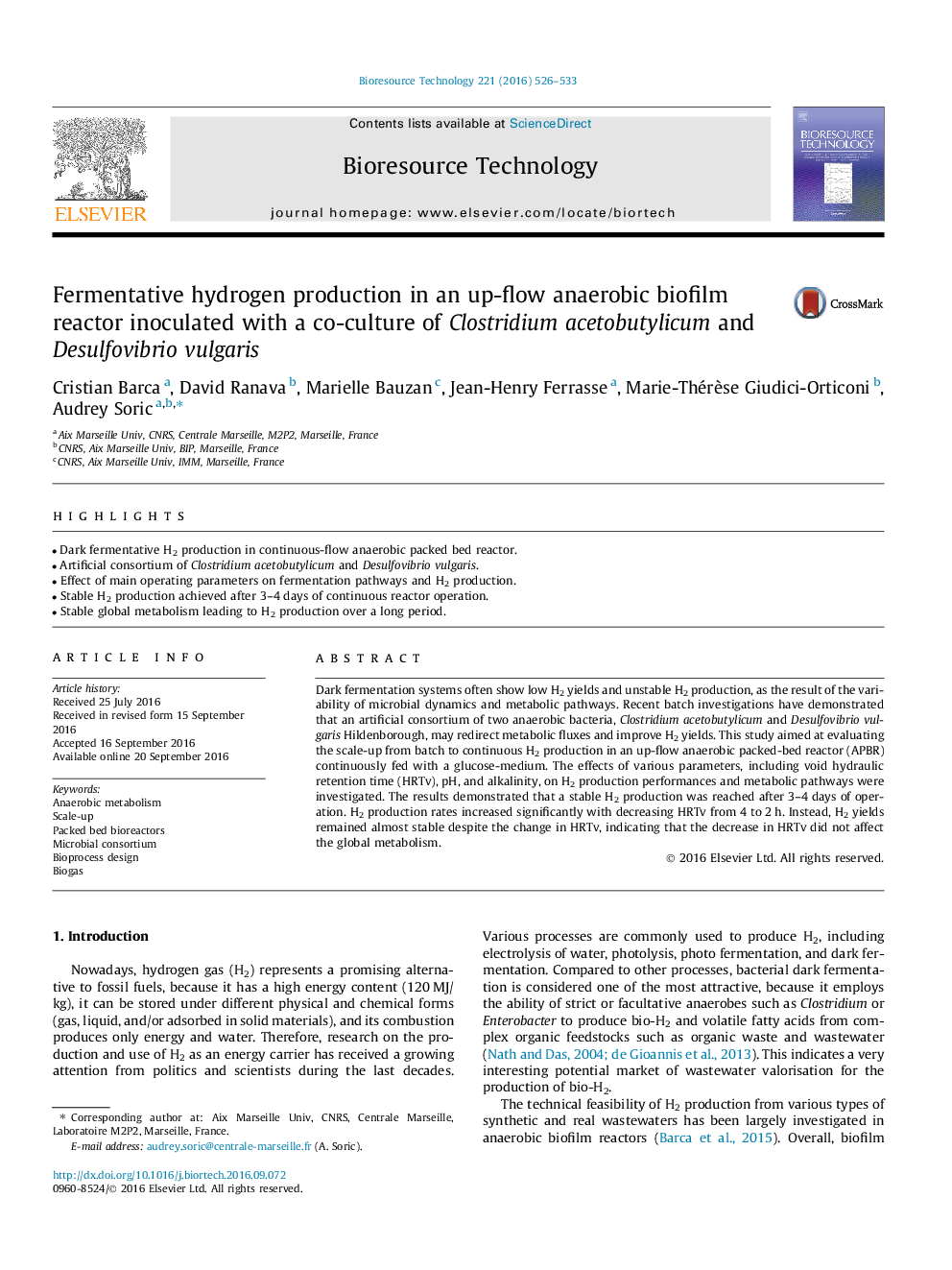| کد مقاله | کد نشریه | سال انتشار | مقاله انگلیسی | نسخه تمام متن |
|---|---|---|---|---|
| 4998068 | 1459922 | 2016 | 8 صفحه PDF | دانلود رایگان |

- Dark fermentative H2 production in continuous-flow anaerobic packed bed reactor.
- Artificial consortium of Clostridium acetobutylicum and Desulfovibrio vulgaris.
- Effect of main operating parameters on fermentation pathways and H2 production.
- Stable H2 production achieved after 3-4Â days of continuous reactor operation.
- Stable global metabolism leading to H2 production over a long period.
Dark fermentation systems often show low H2 yields and unstable H2 production, as the result of the variability of microbial dynamics and metabolic pathways. Recent batch investigations have demonstrated that an artificial consortium of two anaerobic bacteria, Clostridium acetobutylicum and Desulfovibrio vulgaris Hildenborough, may redirect metabolic fluxes and improve H2 yields. This study aimed at evaluating the scale-up from batch to continuous H2 production in an up-flow anaerobic packed-bed reactor (APBR) continuously fed with a glucose-medium. The effects of various parameters, including void hydraulic retention time (HRTv), pH, and alkalinity, on H2 production performances and metabolic pathways were investigated. The results demonstrated that a stable H2 production was reached after 3-4Â days of operation. H2 production rates increased significantly with decreasing HRTv from 4 to 2Â h. Instead, H2 yields remained almost stable despite the change in HRTv, indicating that the decrease in HRTv did not affect the global metabolism.
Journal: Bioresource Technology - Volume 221, December 2016, Pages 526-533